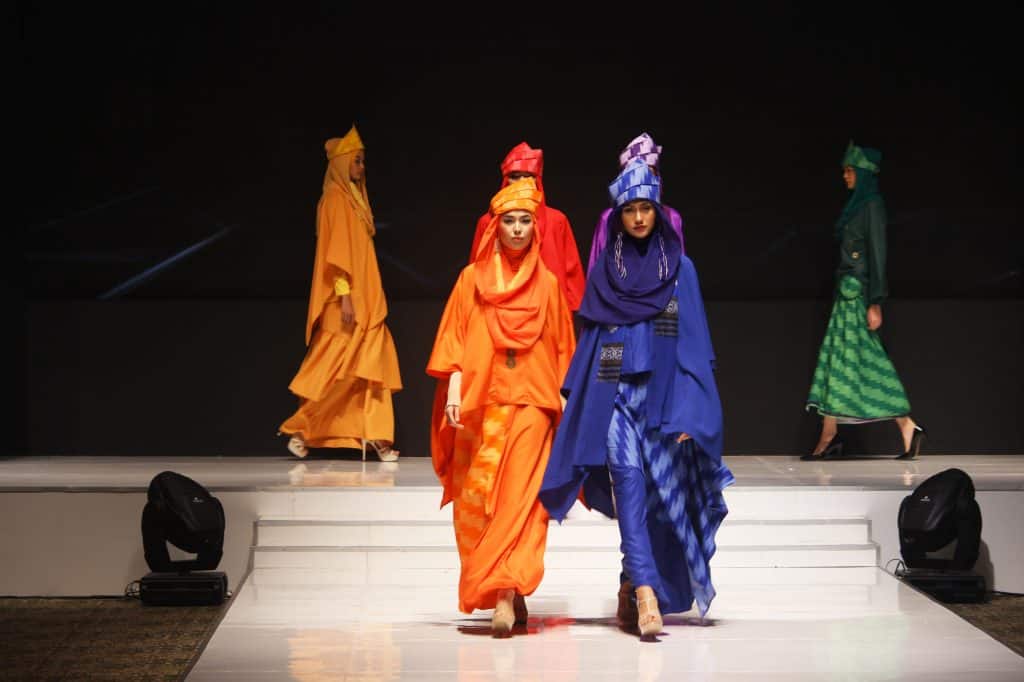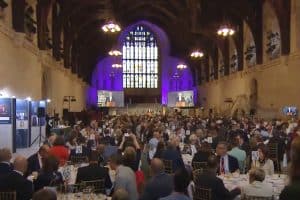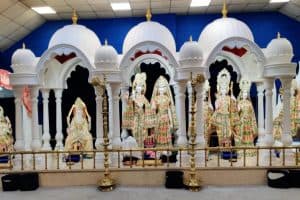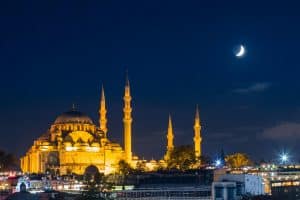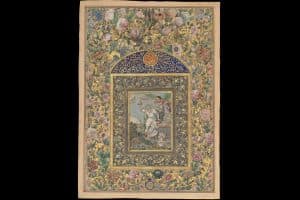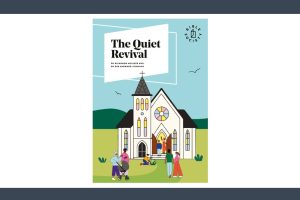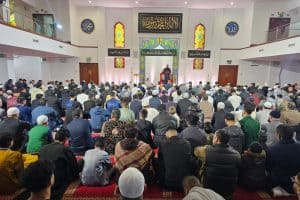By Lianne Kolirin
A growing number of High Street retailers are offering clothing for women who choose to dress modestly, without having to seek out specialist outlets.
A simple search for “modest” on a growing number of websites results in pages and pages of listings featuring floor-length dresses, wide-leg trousers, oversized jumpers and even hijabs.
Marks & Spencer tells shoppers wanting more cover-up than cleavage they will be “spoilt for choice for on-trend outfits that combine style with comfort”, featuring a range of “modest dresses with ankle-skimming hemlines, midi and maxi-length skirts, long-sleeved tops and full-length trousers”.
Similarly, John Lewis boasts a “vast collection” of trousers and modest dresses which “offer a high neckline and finish with a hemline around the ankles”. Among others, it features Aab, a London-based brand set up in 2007 after identifying a gap in the market for “elegant, on trend” modest clothing.
Others, including Asos, H&M and Zara, have also made it easier to shop for modest fashion online and on the High Street.
Retailers can no longer afford to ignore modest dressers. The State of the Global Islamic Economy Report 2020-21 valued the modest fashion sector at $277bn, estimating its worth at $311bn by 2024.
Modest dressing is integral to various religious and cultural societies, though interpretation varies. Broadly speaking, adherents cover up to avoid showing off their bodies. Necklines tend to be high, hemlines low. Designs are generally more loose-fitting than figure-hugging, while ranges may incorporate head coverings.
“Modest fashion is a catch-all term for the different ways in which women from diverse religious communities clothe their bodies in accordance with their interpretation of religious teachings,” explains Reina Lewis, centenary professor of cultural studies at the London College of Fashion. “The idea that religion and fashion are antithetical has a lot of traction on all sides.”
Professor Lewis who has authored numerous books on the subject, including Modest Fashion: Styling Bodies, Mediating Faith, says: “It’s certainly getting a lot easier to shop. Not all women want to cover their hair and those that do will do it in different ways so it isn’t a one-size-fits-all. But when there are more options in the shops that offer different kinds of cover there are dividends for all.”
The movement initially gained momentum in Asia, with countries such as Turkey and Indonesia leading the way.
“Globally, Muslims are a youthful and growing population with significant numbers in the so-called emerging markets. Modern brands want to sell them everything from fridges to footwear,” Professor Lewis adds.
Hafsa Lodi, a journalist and author of Modesty: A Fashion Paradox, says: “Access to modest fashion has improved tremendously over the past decade.
“Mainstream etail sites like Asos, Net-a-Porter, Shopbop and Farfetch have specific sections on their websites for modest wear — where modesty-conscious women previously had to hunt through pages of garments for skin-covering clothing, they can now find instantly within these easy online edits,” she says.
“Social media has played a huge role in normalising and modernising traditional modesty guidelines in mainstream fashion. Just search #modestfashion on Instagram, and you ‘ll see nearly 4,000 results!
“The ‘modest fashion blogger’ has emerged on social media with a huge following and undeniable style savviness,” Ms Lodi says. “Her popularity has proven to retailers that the demographic of modest fashion shoppers is worth catering to, and so brands and designers are increasingly creating and marketing fashion for these consumers. Many of them belong to faith communities, but not all are religious — some simply appreciate the comfort and coverage that modest fashion offers.”
Islam is not the only religion to promote modesty. Orthodox Jewish women, as well as some sects of Christianity — particularly in the United States — also favour covering up.
Batsheva Hay, an observant Jewish designer, incorporates high necks, puffy sleeves and trailing hemlines, which have proved a hit with Celine Dion, Lena Dunham and Courtney Love.
The trend has firmly taken hold in Britain, even making its mark on mainstream designs such as the popular prairie dress, while such style icons as the Duchess of Cambridge, Tilda Swinton and Amal Clooney have all modelled modest outfits.
But it’s not about the rich and famous. Modest fashion has gathered momentum from the ground up, while hijab-wearing models are no longer uncommon and numerous cities including London have played host to modest fashion weeks.
The internet has done much to challenge stereotypes, empower modest dressers and lead to an explosion in the market. Sites such as Modanisa rise to the challenge by catering for a huge market of modest dressers across dozens of countries.
Ms Lodi said: “Platforms like The Modist (now defunct), Modernest and The Reflective celebrate modest fashion without mentioning any particular faith, so as to keep the door open to women of diverse backgrounds, without making the conversation ‘religious’.
“This approach is also effective because of the diversity of interpretations and definitions of modesty, which is a personal and ever-evolving journey for every woman. Setting restrictions on what ‘defines’ modesty may be off-putting to less conservative consumers who nonetheless identify with modest fashion.”
The internet and social media have enabled members of different religious and cultural groups to share common ground, Professor Lewis says. It can become a “conduit for faith dialogue and activism”.
“Some women who engage in modest fashion express themselves as being part of a modest fashion movement and take support from interacting with women from other communities,” she adds.
“It isn’t that I think consumer culture will liberate us from all problems but I do think if people are part of the majority culture they don’t realise what it means to feel excluded. If you can buy on the open market products that allow you an articulation and expression of your religion ethnic cultural self, that has to be a good thing.”

